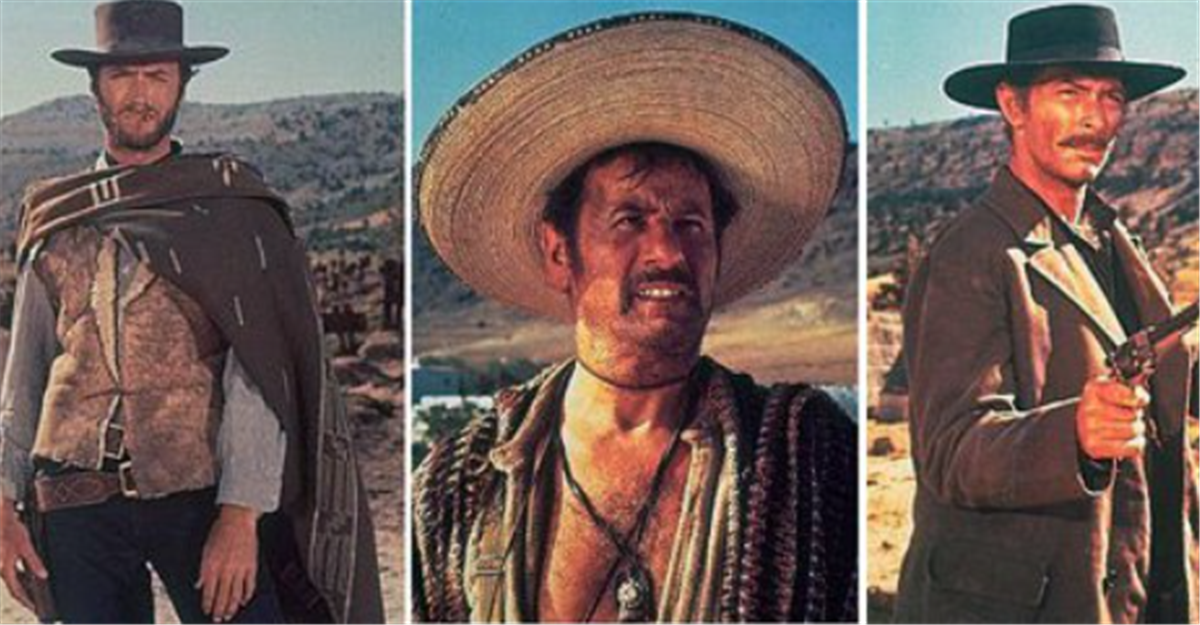The Good, The Bad, And The Ugly’s ending is famous and still so beloved for as a spaghetti Western for its final scene ushering in a new era for the genre. Director Sergio Leone’s Dollars trilogy began in 1964 with A Fistful of Dollars. This inexpensive Clint Eastwood vehicle was a box office hit, and 1965 saw the arrival of its first sequel, For A Few Dollars More. Although both of these movies remain well regarded critically, it was 1966’s The Good, The Bad, And The Ugly that cemented Leone and Eastwood’s statuses as central figures in the spaghetti Western sub-genre.
While Clint Eastwood appeared in many Westerns, not all of them qualify as spaghetti Westerns. Spaghetti Westerns were created by European (usually Italian) directors and writers and typically featured more bloodshed and moral ambiguity than their American counterparts. In this regard, The Good, The Bad, And The Ugly was the archetypical spaghetti Western. Filmed when Eastwood was only 36 years old, The Good, The Bad, And The Ugly follows the eponymous trio of amoral bandits who vie for a buried cache of gold against the backdrop of the American Civil War. Unlikely alliances and endless double crosses inevitably ensue.
The Man With No Name Was A Faster Draw

By The Good, The Bad, And The Ugly’s ending, Lee Van Cleef’s Angel Eyes, Eastwood’s Blondie (or The Man With No Name), and Eli Wallach’s Tuco have all ended up at opposite ends of the cemetery at Sad Hill. The gold that Tuco and Blondie heard about is buried nearby, but all three men want to leave the cemetery with the entire fortune. A lengthy, legendary Mexican stand-off ensues as the three men eye each other, their hands hovering over their guns. The scene became iconic thanks to its daring duration, its tension, and Ennio Morricone’s instantly recognizable score.
Even though he has been known to resort to underhanded tricks and clever gambits in earlier movies and throughout The Good, The Bad, And The Ugly , Blondie beats Angel Eyes fair and square when he outguns him.
Finally, Angel Eyes draws his gun first but Blondie shoots and kills him before he can fell Eastwood’s Man With No Name. Hilariously, Tuco plays no part in the standoff since, after trying to fire, he discovers that there are no bullets in his gun. Even though he has been known to resort to underhanded tricks and clever gambits in earlier movies and throughout The Good, The Bad, And The Ugly, Blondie beats Angel Eyes fair and square when he outguns him. This is thematically appropriate since Angel Eyes is even more untroubled by playing dirty than Blondie.
Why Blondie Almost Hangs Tuco In The Good, The Bad, And The Ugly’s Ending
Clint Eastwood and Eli Wallach’s Characters Share A Longstanding Feud

Immediately after killing Angel Eyes, Blondie proves that he is no hero by hanging Tuco. At first, it seems like Eastwood’s antihero intends to genuinely kill Tuco, a dark ending to their uneven history of feuds and occasional uneasy collaboration. However, he is just toying with Taco’s mind in a call-back to the movie’s beginning. Part of what makes The Good, The Bad, And The Ugly a classic Western is the satisfying sense of narrative cohesion the story provides, with the ending mirroring the beginning. At the start of the movie, Tuco and Blondie work together on a scam.
In their profitable setup, Blondie would deliver Tuco to a town’s sheriff, then help him escape from hanging, and move on to the next town to repeat this process. Eventually, Blondie stranded Tuco in the desert since his partner in crime was getting on his nerves. This could easily have killed Tuco, proving that Blondie is far from heroic. However, Tuco got his own back by forcing Blondie to march through the desert until he almost died of dehydration. In the end, Blondie is once again getting his own back by tricking Tuco into thinking he would kill him.
Where is Blondie Going In The Good, The Bad, and The Ugly’s Final Shot?
The Destination Of Cline Eastwood’s Antihero Is Intentionally Ambiguous
There is no way of knowing where Blondie is riding off to in The Good, The Bad, and The Ugly’s final shot, but there is a reason that this is left ambiguous. The movie’s perspective subtly shifts between Blondie, Angel Eyes, and Tuco throughout, with all three characters getting a few scenes in the spotlight. Although Clint Eastwood’s Man With No Name is the hero of the movie’s final showdown, the last scene belongs to Tuco. The audience fears as Tuco nearly chokes and laughs with relief when he survives but, like Tuco, are left with no idea where Blondie goes.
